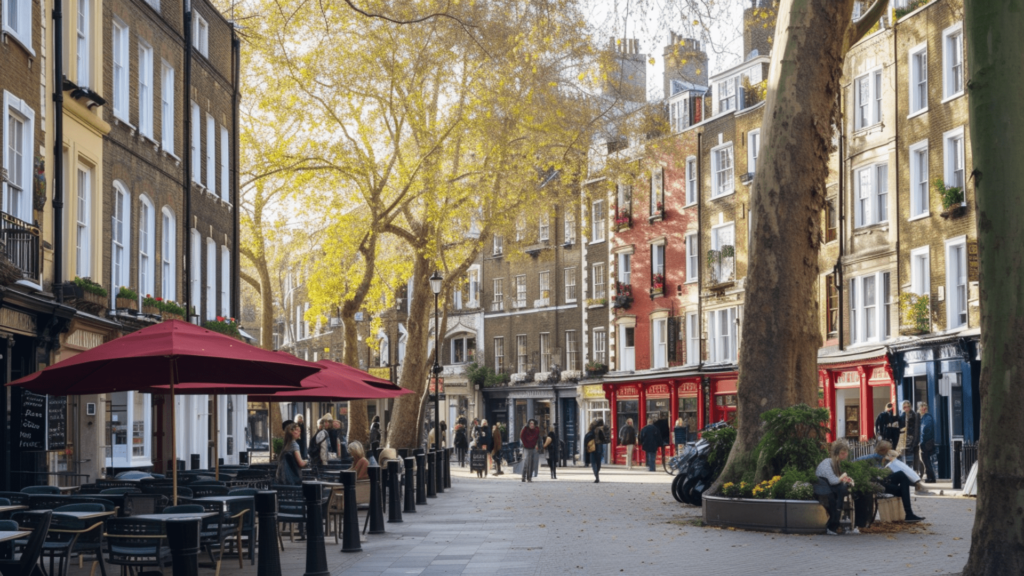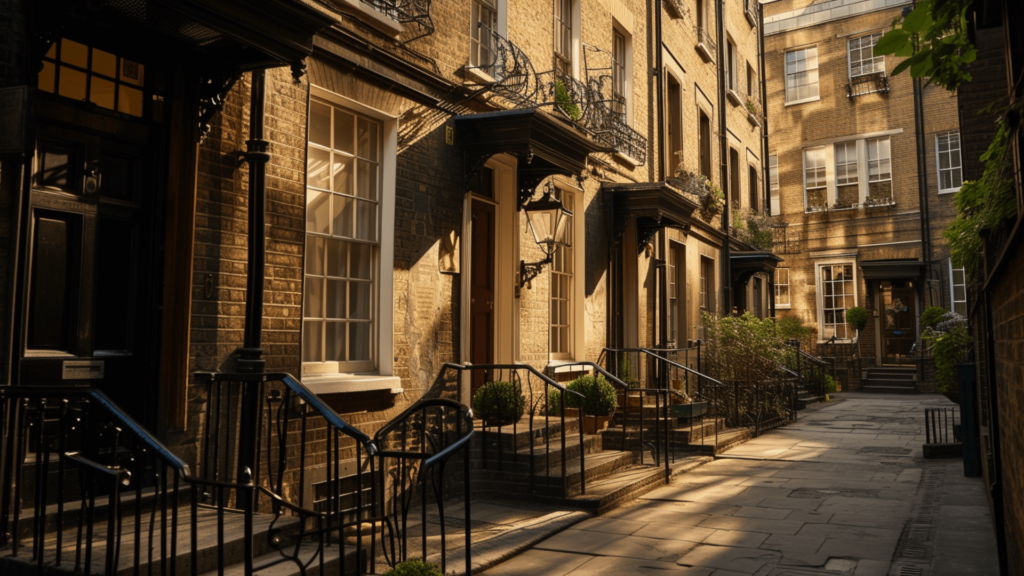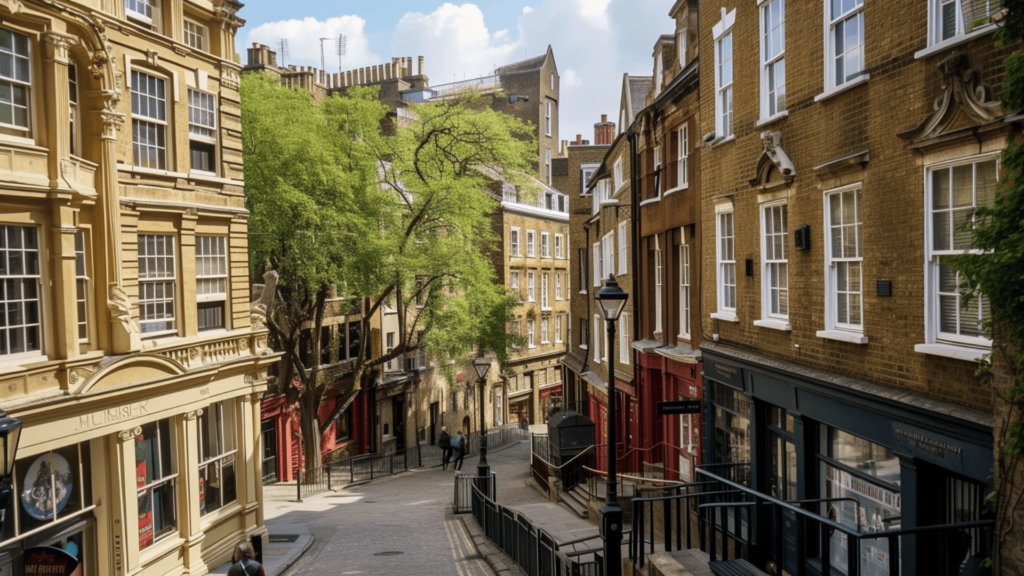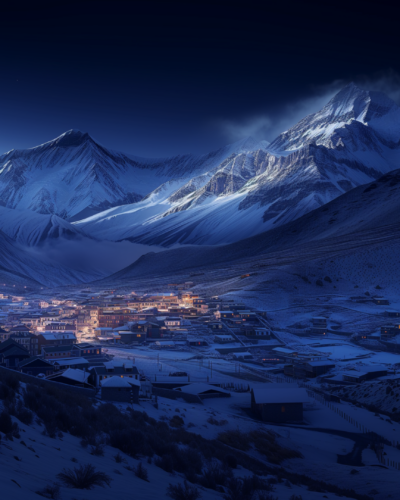London — a city where history whispers from every corner, and modernity hums in the air. It’s not just the beating heart of England but a muse to some of the greatest literary minds. Dive into a journey where words paint London’s essence, as seen through the eyes of renowned authors.

A city steeped in history and bustling with contemporary life, London has long been a source of inspiration for writers around the globe. Its streets, brimming with stories, have been immortalized in countless literary works. From the fog-laden alleys of Victorian novels to the vibrant, eclectic neighborhoods depicted in modern fiction, London’s multifaceted persona has been captured in myriad ways.
Interestingly, London is not just a city with a rich literary heritage; it is a city of superlatives. In fact, many consider London as one of the best capital cities for book lovers. And with over 800 bookshops scattered across the city, this alone speaks volumes about London’s unbreakable bond with literature.
Today’s blog is more than a mere literary analysis; it’s a celebration of London’s enduring allure, a city that has withstood plagues, fires, and wars yet continues to thrive and inspire. This exciting literary journey through London will show us that this city isn’t just a marvelous place to visit. It’s a living, breathing character that has played a pivotal role in shaping some of history’s most profound literary works.
T.S. Eliot’s Modernist Literary Journey of London: A City of Solitude
In T.S. Eliot’s “The Waste Land,” London emerges as a character steeped in desolation and introspection. The poem, a mosaic of cultural references and fragmented narratives, mirrors the disjointed experience of post-World War I London. Eliot’s depiction of the city, mainly through lines like “Unreal City,” encapsulates a London grappling with the aftermath of war and the onset of modernity.
The Thames River, a recurring motif in Eliot’s work, becomes a symbol of both London’s historical depth and its existential ennui. As you walk along the Thames today, you can almost hear the echoes of Eliot’s words, blending with the rhythmic flow of the river.
However, Eliot’s London is not just about the physical spaces; it’s a landscape of the mind, reflecting the city’s transformation and the collective consciousness of its inhabitants. This portrayal invites readers to experience London not merely as a geographical entity but as a reflection of the human condition in a rapidly changing world.
Moreover, Eliot’s London is not just a backdrop but a reflection of the fragmented modern experience. Walking through the city, one can sense the juxtaposition of the historical and the contemporary, much like in the poem Eliot wrote. His portrayal invites us to look beyond the physicality of London, seeing it as a symbol of human resilience and transformation in the face of changing times.

Virginia Woolf’s Personification of London’s Spirit
Meanwhile, Virginia Woolf’s “Mrs. Dalloway” paints a literary journey through London in vibrant, pulsating hues. With her stream-of-consciousness style, Woolf captures the city as a living entity, interweaving its essence with the characters’ inner lives.
The novel takes us through the streets of Westminster, where the titular character, Clarissa Dalloway, experiences the city’s multifaceted personality. St. James’s Park, with its tranquil beauty, becomes a backdrop to Clarissa’s introspections, symbolizing both the city’s enduring charm and the fleeting nature of time.
Woolf’s London is a city of contrasts — the bustling Piccadilly Circus and the solemn Big Ben, each location reflecting different aspects of the human psyche. In “Mrs. Dalloway,” London is not just a setting; it is a character that interacts with, influences, and is shaped by the people who inhabit it.
Furthermore, Woolf’s literary journey of London is a canvas of emotions, where the city’s architecture and landscapes mirror the internal journey of her characters. As one traverses the areas of Bloomsbury or along the Thames, Woolf’s lyrical prose resonates, making the city feel like a living, breathing companion to those who wander its streets.
Stephen Fry: Language as a Metaphor for London’s Complexity
In his literary reflections of London, Stephen Fry draws a compelling parallel between the city and the English language. He sees both as amalgamations of diverse influences, constantly evolving and adapting. Much like the language spoken within it, London is a tapestry woven from various histories, cultures, and ideas.
Fry’s analogy leads us through the linguistic landscapes of London — from the historic debates at Speaker’s Corner in Hyde Park to the innovative theaters of the West End. Each of these locations demonstrates London’s dynamic nature, akin to the fluidity and richness of English.
London, in Fry’s view, is a city that communicates. Its streets and buildings tell stories of the past and present, much like words that carry meanings shaped by their use and history. This perspective invites readers to explore London not just as a place but as a living, evolving language. Aside from that, Fry’s analogy also extends to London’s vast array of literature and art, suggesting a city that’s as varied and expressive as the language itself. From the historical richness of the British Museum to the avant-garde galleries in East London, each corner of the city contributes to its linguistic tapestry.

Anna Quindlen: Historical Layers On A Literary Journey Of London
In “Imagined London” by Anna Quindlen, the author explores London as a palimpsest, a city where history and modernity coexist in a fascinating interplay. Quindlen guides readers through historical landmarks that embody London’s layered past, such as the Tower of London, where centuries of history whisper through its ancient stones, and the modernistic Shard, symbolizing the city’s continual evolution.
Her narrative wanders through the cobblestone streets of the City of London, unveiling tales of yesteryears amidst the bustling financial district. Quindlen’s London is an intricate tapestry, where each thread — from the Roman Londinium to today’s cosmopolitan hub, adds depth and color to the city’s narrative.
Moreover, Quindlen emphasizes the city’s ability to tell its story through its landmarks and streets. A walk through places like Covent Garden or the South Bank is not just a physical journey but a travel through time, where each stone and building has a story to tell.
Ben Aaronovitch: Diversity as London’s Hallmark
In “Moon Over Soho,” Ben Aaronovitch presents London’s timeless Soho that’s vibrant with diversity and magical realism. His portrayal takes us into the heart of Soho, a melting pot of cultures, cuisines, and characters, reflecting the city’s multicultural ethos.
Aaronovitch’s literary journey in London is alive with the rhythms of jazz in smoky clubs, the chatter of diverse languages on busy streets, and the mystical undercurrents beneath the city’s surface. This depiction showcases London as a city where tradition and innovation, reality and fantasy, coexist in a dynamic equilibrium.
Furthermore, Aaronovitch’s London is a celebration of its cultural and supernatural diversity. The city, as portrayed in his narrative, is not just a geographical location but a realm where the extraordinary coexists with the mundane, inviting readers to explore and embrace its many layers.

Unveiling London: A Literary Mosaic of Time and Culture
Our literary journey through London — starting with T.S. Eliot’s reflective cityscapes and ending with Ben Aaronovitch’s celebration of its diversity — reveals the city as a multifaceted character in the world of literature.
Each author’s portrayal, from Virginia Woolf’s personified city to Anna Quindlen’s historical narratives, offers a distinct lens through which to view London. This literary exploration enhances our understanding of London not only as a geographical space but also as a living entity with its own stories and secrets. As we close this literary sojourn, we invite you, the reader, to continue the exploration. Whether through the pages of a book or the streets of London itself, discover the endless stories that this historic yet ever-evolving city has to offer. London awaits your footsteps and your imagination. Experience London’s historical streets through your own eyes.











